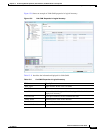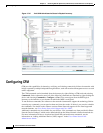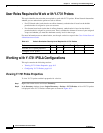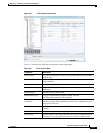
CHAPTER
16-1
Cisco Prime Network 4.0 User Guide
OL-29343-01
16
Monitoring Y.1731 IPSLA Configuration
The following topics provide an overview of the Y.1731 technology and describe how to view and
monitor Y.1731 configurations in Prime Network Vision:
• Y.1731 Technology: Overview, page 16-1
• User Roles Required to Work with Y.1731 Probes, page 16-2
• Working with Y.1731 IPSLA Configurations, page 16-2
Y.1731 Technology: Overview
Y.1731 is an ITU-T recommendation that provides mechanisms for service-level Operation,
Administration, and Maintenance (OAM) functionality in Ethernet networks. It covers mechanisms for
Fault and Performance Management. Performance Management is the most sought-after functionality in
this standard.
In Prime Network, devices that are configured using Y.1731 are detected, scanned for configurations,
and monitored. A device configured using Y.1731 has probes, which are root objects or containers that
hold single or multiple instances of Service Level Agreement (SLA) probes configured by the user.
In Prime Network, the Y.1731 technology is supported on the Cisco Aggregation Service Router (ASR)
9000 and Cisco Carrier Packet Transport (CPT) network elements.
Y.1731 Performance Management Mechanisms
The OAM functions for performance monitoring according to Y.1731 allow measurement of the
following performance parameters.
• Frame Loss Ratio—Expressed as a percentage. This ratio is defined as the number of frames not
delivered divided by the total number of frames during a time interval.
• Frame Delay—A one-way delay for a frame, where one-way frame delay is defined as the time
elapsed since the start of transmission of the first bit of the frame by a source node until the reception
of the last bit of the same frame by the destination node.
• Frame Delay Variation—The measure of the variations in the frame delay between a pair of service
frames. The service frames belong to the same CoS (Class of Service) instance on a point-to-point
Ethernet (ETH) connection or multipoint ETH connectivity.
• Throughput—The average rate of successful traffic delivery over a communication channel.
Typically used under test conditions, such as out-of service tests, when there is no traffic for the
tested Ethernet connection.


















